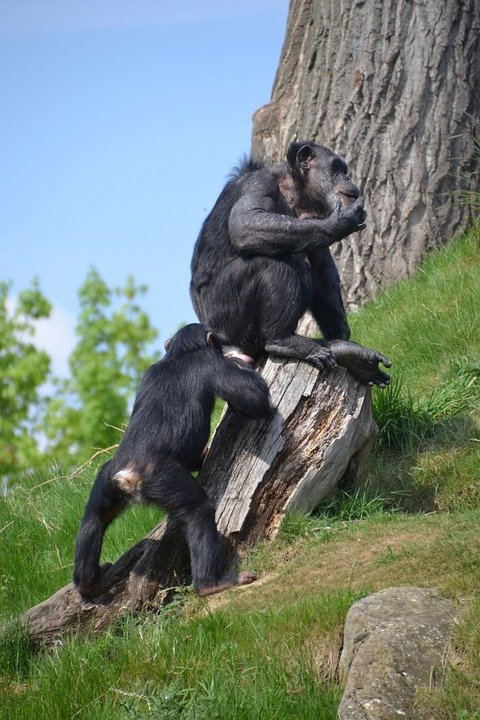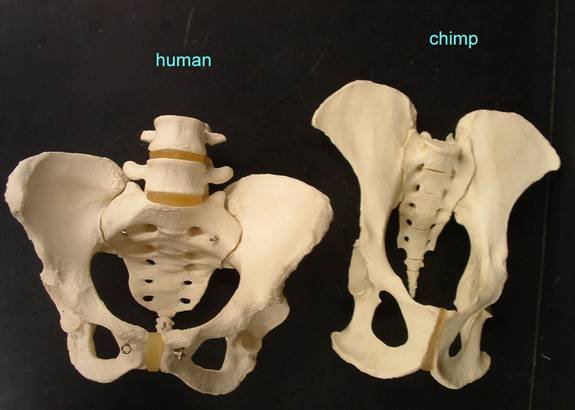Okay, maybe not YOU specifically, but human beings definitely have a pretty big behind. It's kind of strange, seeing as when we compare human beings to other apes, we're tiny in almost every other regard. Our heads are smaller, arms are shorter, feet are smaller, muscles are weaker, etc. Yet when it comes to our butts, we take the cake.

Let's talk about what I mean when I say 'butt'. The real name for this muscle is Gluteus Maximus, and it's one of four Gluteal Muscles that you have, the others being Gluteus Medius, Gluteus Minimis, and the Tensor Fasciae Latae. As it's name suggests, it's massive. In fact, it is considered by many to be the thickest and biggest muscle on the human body. However, the question still remains... why is it so big?
To answer that, we have to go back in time -- about 6 million or so years.

You see, we didn't always stand on two legs. We used to be quadrupeds, or most likely even knuckle walkers. At some point 6 million years ago, our ancient ancestors split from chimpanzees on the evolutionary tree, and took the first steps in becoming bipedal.
The reasons for doing this is a topic of debate to this day. Our ancestors may have done it simply to free up their hands to be able to reach and carry food, or they may have done it to save energy. You see, it costs 4 times as many calories for a chimpanzee to walk the same distance as a human being. This is because using four limbs to propel yourself through your environment naturally requires more energy, and in a world where food is more scarce, these precious calories can literally be the difference between life and death.
So whatever the reasons for standing on 2 feet were, the fact is that we did it. The thing is, it also meant that we needed stronger and more efficiently angled musculature to pull it off.

When you look at a chimpanzee stand or walk, you'll notice that their legs look as if they've been riding a horse for too long, with their hips angled outwardly. This is because their hip bone, or os coxa, is angled differently than yours is.

The human being hip bone is angled in a slightly sideways position, while a Great Ape hip bone (Chimpanzee, Gorilla, or Orangutan) is angled more front to back. This seemingly subtle difference actually equates to a huge difference when it comes to locomotion. Because of this front to back orientation, chimps and gorillas are unable to use their Glutes to help balance their torso from falling to the side. Basically, every time a chimp walks on two legs, it has to waddle and shift its weight from side to side, instead of placing each foot in front of the other, like you're able to do.
So around 6 million or so years ago, our ancestors hip bones started to migrate to a slightly different orientation, which meant that the attached musculature (Glutes), needed to get bigger to help balance the torso, and keep us from falling over flat on our faces, or backs!
So why is your butt so big? It's because you walk on two feet!
That picture comparing the hip bones is great, explains why I've never seen a chimp running upright.
Thanks for the informational post. Having an upright posture was theorized to be an adaption for running. Human beings are some of the best long-distance runners in the entire animal kingdom due to our efficient bipedal gate and ability to sweat and remove heat easily.
It's covered in a lot of detail in Born to Run if you want to check it out.
Thanks! I appreciate it!
Born to Run is a great book. Christopher McDougall did an outstanding job showing that we're the absolute best species on the planet when it comes to long distance running.
I'll probably write a blog post about sweating soon too, because like you said, it's an incredible adaptation that allowed us to do so, so much!